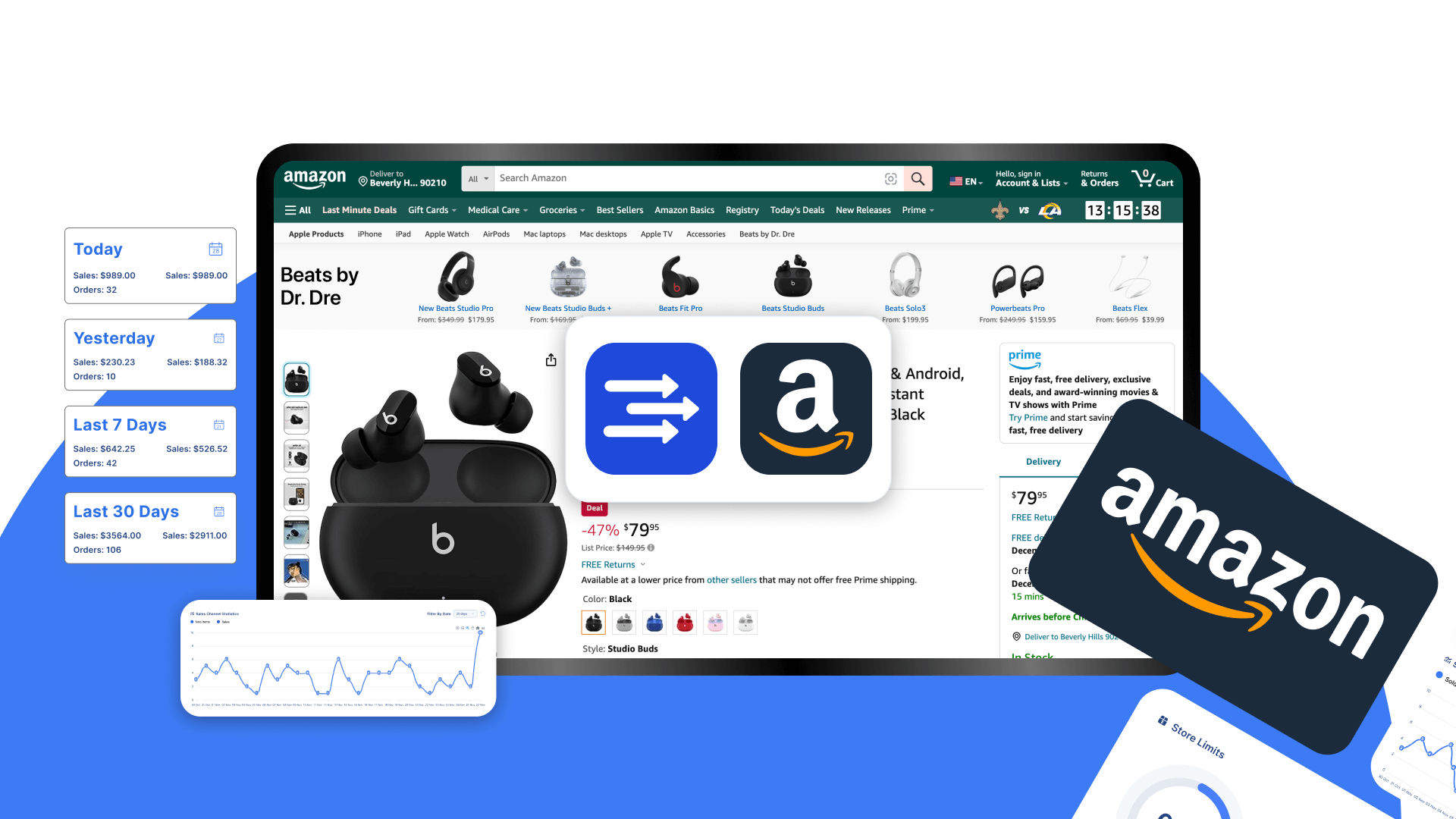Your Amazon product title is the single most powerful part of your listing. It’s the first thing shoppers read, the first thing Amazon’s algorithm scans, and often the reason someone clicks — or scrolls away.
In a marketplace where millions of products compete for attention, your title can make or break your success. A well-crafted Amazon title not only improves visibility in search results but also increases click-through rate (CTR) and conversions.
In this blog, you’ll learn exactly how to write SEO-optimized Amazon titles that rank high and sell — step by step.
1. Understand What Amazon’s Algorithm (A9) Looks For
Amazon’s A9 algorithm doesn’t just care about keywords — it focuses on relevance and performance.
The title plays a major role in:
- Helping Amazon understand what your product is
- Matching your listing with customer search intent
- Encouraging clicks and conversions, which boost rankings
In short: a great title = more clicks = more sales = higher ranking.
So, your goal is to create a keyword-rich title that’s easy to read and emotionally engaging.
2. Know the Ideal Amazon Title Structure
Every category on Amazon has slightly different rules, but most high-performing titles follow this proven formula:
Brand + Primary Keyword + Key Features + Size/Color/Quantity/Model
Example:
FitFlex Men’s Running Shorts – Lightweight Gym Shorts with Zipper Pockets – Moisture-Wicking Sportswear for Training – Black, Medium
This format covers both SEO (keywords) and conversion (details).
Why it works:
- The brand adds trust.
- The main keyword (“men’s running shorts”) improves discoverability.
- The features (“lightweight, moisture-wicking”) add benefits.
- The size/color makes it clear for shoppers.
3. Use Your Primary Keyword Early
Amazon gives more weight to words that appear earlier in the title.
So always start your title with your primary keyword.
For example:
✅ Stainless Steel Water Bottle – Leakproof, BPA-Free, Double Wall – Keeps Drinks Cold 24 Hours
❌ HydraPro Bottle – Best Quality, Leakproof Stainless Steel Water Bottle
In the first one, the main keyword (“stainless steel water bottle”) is upfront — that’s better for SEO and search visibility.
4. Add Secondary Keywords Naturally
Include 1–2 secondary keywords to help your listing show up for related searches.
Example (Primary: “yoga mat”, Secondary: “non-slip mat”, “eco-friendly mat”):
EcoFlow Yoga Mat – Non-Slip, Eco-Friendly Exercise Mat for Home Gym & Pilates – 6mm Thick – Purple
Avoid stuffing too many keywords — Amazon’s algorithm is smart enough to detect over-optimization, and buyers can easily spot spammy titles.
5. Focus on Readability and Flow
Amazon customers read fast. Your title should flow naturally, not sound robotic.
Tips for readability:
- Use “–” or “|” to separate ideas
- Capitalize the first letter of each word (Amazon’s style guide)
- Don’t use all caps or emojis
- Keep the title under 200 characters (ideally 150–180 for mobile)
Example:
✅ Premium Leather Wallet for Men – RFID Blocking Slim Card Holder with Coin Pocket – Brown
❌ MEN WALLET RFID BLOCKING SLIM WALLET BEST QUALITY LEATHER CARD HOLDER!
The first is clean and professional — the second feels spammy and untrustworthy.
6. Highlight What Makes You Unique
What’s your product’s edge? Add USP-driven words (Unique Selling Points).
Examples of strong hooks:
- “Bestselling”
- “Eco-friendly”
- “Travel Edition”
- “Handmade in USA”
- “New 2025 Model”
These subtle additions grab attention and build confidence instantly.
Example:
TravelPro 2025 Edition Luggage – Lightweight Carry-On with TSA Lock – 20-Inch Hard Shell Spinner
7. Use AI Tools for Research, Not for Copying
AI tools can save hours in keyword discovery and title brainstorming — but don’t just paste AI-generated text.
Best practice workflow:
- Use AI (like ChatGPT, Helium10, or Jungle Scout) to find trending keywords.
- Analyze top-performing listings in your niche.
- Write your title manually using those insights.
Remember: AI gives data — you give personality. The combination wins.
8. Test, Measure, and Improve
Amazon is dynamic — trends change monthly.
Keep testing your titles for:
- Click-through rate (CTR)
- Conversion rate
- Search ranking movement
Use tools like Helium10, SellerApp, or DataHawk to A/B test different title versions.
Even a small change (like adding “2025 Edition” or “with Case”) can increase clicks by 10–20%.
9. Avoid Common Title Mistakes
Here’s what to never do in your Amazon titles:
- ❌ Keyword stuffing
- ❌ Using promotional phrases (“Best on Amazon!” “Free Shipping!”)
- ❌ Irrelevant terms (e.g., adding “gift for mom” when not suitable)
- ❌ Overuse of symbols or special characters
- ❌ Misleading information
Keeping it honest, clean, and keyword-rich is the real secret to ranking sustainably.
Conclusion
An Amazon title isn’t just text — it’s your frontline marketing weapon.
It tells Amazon’s algorithm what you’re selling, and it tells buyers why they should buy from you.
When you blend strong SEO with clean readability, emotion, and trust — you create titles that rise above the crowd, rank on page 1, and consistently convert.
Take time to test, refine, and analyze — because in Amazon’s world, words equal visibility, and visibility equals sales.


